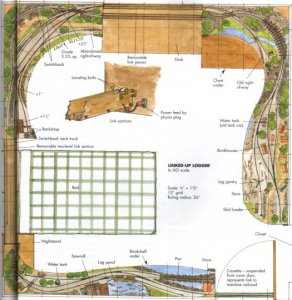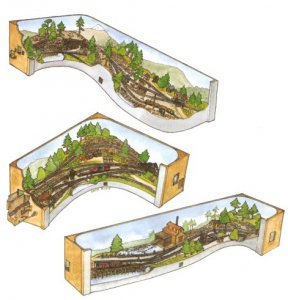Based on the good reviews of this book given by several of you here on The Gauge, I used my $20 Hastings gift card that I got for my birthday to buy a copy of it. The careful thought and details that Mr. Rice puts into these layouts makes them really come alive.
I'm not all the way through the book yet, but so far I've been inspired by the Mount Galena Mines Railroad. It even has me seriously considering HO again! <Shocked facial expressions and gasps all around.>
Anyway, all I wanted to say here was "Thanks!" to everyone who recommended this book, and to encourage those that haven't seen it to take a look at it if you're trying to figure out how to cram a layout into a small space.
Thanks!
-Rory
I'm not all the way through the book yet, but so far I've been inspired by the Mount Galena Mines Railroad. It even has me seriously considering HO again! <Shocked facial expressions and gasps all around.>
Anyway, all I wanted to say here was "Thanks!" to everyone who recommended this book, and to encourage those that haven't seen it to take a look at it if you're trying to figure out how to cram a layout into a small space.
Thanks!
-Rory





